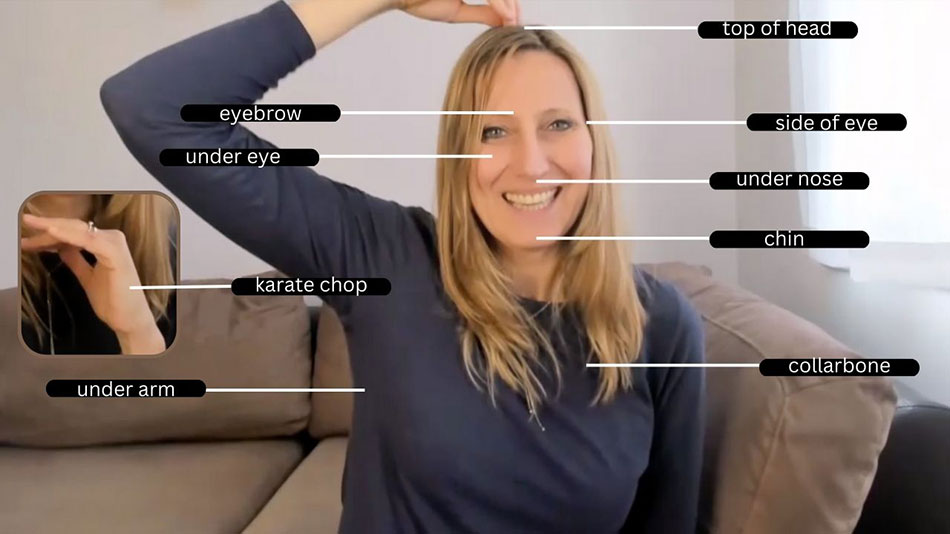
How to Change Your Mindset: Overcome Feelings of Inadequacy
Do you often find yourself feeling not good enough, whether it's in your career, relationships, or personal life? If so, you're not alone. Many professional women struggle with this overwhelming sense of inadequacy that can hold them back from reaching their full potential. Change your mindset and you'll change your feelings too.
This feeling of not being good enough can stem from a variety of sources, such as societal expectations, past experiences, and internalized negative beliefs. It can manifest as self-doubt, a lack of confidence, and the nagging sense that you're just not measuring up.
But here's the thing – these feelings of inadequacy are just thoughts. They're not facts, and they certainly don't have to define you or limit your life. With the right mindset shift and tools, you can overcome these negative thoughts and start believing in yourself again.
In this blog post, we'll explore five powerful strategies that can help you change your mindset and break free from the cycle of self-doubt. From mindfulness practices to positive affirmations and more, we'll give you the techniques you need to silence your inner critic and cultivate unshakable confidence.
Mindfulness: The Power of Present Moment Awareness
The first step to learn how two change your mindset
One of the most effective ways to counter negative thought patterns is through the practice of mindfulness. Mindfulness is the act of bringing your full attention and awareness to the present moment, without judgement.
By cultivating this present moment awareness, you can observe your thoughts with detachment, rather than getting caught up in them. This makes it easier to let go of self-critical thoughts and shift your mindset in a more positive direction.
Some simple mindfulness techniques you can try include:
- Meditation: Set aside 5-10 minutes each day to sit quietly, focus on your breath, and observe your thoughts without engaging with them.
- Deep breathing exercises: When you notice negative self-talk arising, take a few deep breaths to re-center yourself in the present moment.
- Mindful walking: Go for a walk and focus all your senses on the experience – the sights, sounds, and sensations around you.
The key is to gently bring your attention back to the present moment whenever your mind wanders to self-critical thoughts. With regular practice, mindfulness can help you develop a kinder, more accepting relationship with yourself.
Harness the Power of Positive Affirmations
The second step to learn how two change your mindset
Our internal dialogue has a profound impact on our self-perception and mindset. Unfortunately, for many of us, that inner voice is highly critical and negative. Positive affirmations offer a way to consciously reshape that inner narrative.
Positive affirmations are positive statements that you repeat to yourself with the intention of replacing negative thought patterns with more uplifting, empowering beliefs.
Some examples of affirmations to help overcome feelings of inadequacy include:
- "I am worthy of success and happiness."
- "I trust in my abilities and strengths."
- "I am enough, exactly as I am."
To use affirmations effectively:
Make them specific, positive, and in the present tense
Repeat them regularly, ideally several times per day
Post them where you'll see them often as a visual reminder
Pair them with visualization by imagining yourself already embodying the affirmation
Consciously planting these positive seeds in your mind can help reprogram your subconscious beliefs over time. Be patient and consistent – mindset shifts take work but are so worthwhile.
Cultivate Self-Compassion to Build True Confidence
The third step to learn how two change your mindset
Perhaps one of the most powerful antidotes to feelings of inadequacy is the practice of self-compassion. Self-compassion means treating yourself with the same kindness, understanding, and care that you would offer a good friend.
We're often our own harshest critics, judging ourselves by impossibly high standards. Self-compassion encourages us to ease up on those unrealistic expectations and embrace our imperfections.
Some tips to be more self-compassionate:
Notice your self-critical inner voice and consciously reframe those thoughts in a kinder way
Remind yourself that all humans are imperfect and make mistakes – that's part of the shared human experience
Comfort yourself as you would a friend going through a hard time, with soothing words and gestures
Focus on your strengths and accomplishments rather than falling into the comparison trap
True confidence comes from this ability to accept yourself – flaws and all – with compassion. From that place of self-acceptance, you can then grow and improve from a stance of self-kindness rather than harsh self-criticism.

Try the Emotional Freedom Technique (EFT) for Quick Relief
The fourth step to learn how two change your mindset
If you're really struggling with intense feelings of inadequacy, the Emotional Freedom Technique (EFT) or "tapping" may provide some quick relief. EFT is a mind-body technique that combines acupressure points with focused thought to release stuck emotions and limiting beliefs.
Here's a quick overview of how to practice EFT tapping:
Identify the negative emotion or belief you want to address (e.g. "I'm not good enough")
Rate the intensity of that feeling from 0-10
Tap on the "karate chop" point on your hand while stating your setup phrase: "Even though I feel ___, I deeply and completely accept myself."
Then tap through the remaining EFT points while repeating a simple reminder phrase like "not good enough"
When finished a couple of rounds, take a few deep breaths and re-rate the intensity of the emotion. It should be lower.
Repeat as needed until you get substantial relief.
EFT can be an extremely powerful tool for quickly shifting your energy and mindset in difficult moments. While simple, it's best to work with a professional EFT practitioner initially to get the most out of this technique.
Additional Strategies to Build Belief in Yourself
In addition to the tools above, here are some other tips that can help reinforce a mindset of self-confidence and personal worth:
- STOP! Simply stop attacking yourself, stop criticising you, stop scaring yourself just STOP traumatising yourself again and again, thinking fearful thoughts and cultivating negative beliefs. Just choose to stop this unhealthy habit now!
- Practice self-care: When we neglect our basic needs for rest, nutrition, and downtime, our self-esteem takes a hit. Make self-care a top priority.
- Seek professional support: A good coach or therapist can help you unpack the roots of your self-doubt and give you tools to reframe your mindset. There's no shame in getting support!
My Emotional Healing Services
The fifth step to learn how two change your mindset
If you're really struggling with feelings of inadequacy and lack of self-worth, know that you don't have to go it alone. As an experienced EFT and NLP therapist, I can provide you with personalised guidance and support to help you change your mindset in a profound way.
Through our work together, I'll help you identify the underlying beliefs and thought patterns that are fueling your self-doubt. Then, using powerful mindset tools like those outlined in this article, we'll dismantle those limiting beliefs and rebuild your confidence from the inside out.
You'll learn how to silence your inner critic, befriend yourself with self-compassion, and cultivate an unwavering sense of self-belief. With commitment and consistency, you truly can change your mindset in ways that will touch every area of your life.
I know how deeply painful and limiting feelings of inadequacy can be. But I also know, through my own journey and work with clients, that they don't have to define your reality. You have the power to change your mindset and step into your highest potential.
If you're ready to break free from self-doubt and start embodying the confidence you deserve, I invite you to book a free consultation call with me. Together, we'll begin the life-changing journey of transforming your mindset so you can create the life and career you most deeply desire.
Don't let feelings of inadequacy hold you back a moment longer. The time to invest in yourself is now.
Book your free call today and let's get started!
Alternatively
Check my FREE Workshop on "Self-Love"
to embrace self-compassion and nurture the light within you
Are you ready to embark on a journey towards self-love and inner peace?Through a combination of mindfulness practices, journaling exercises, Emotional Freedom Technique (EFT), positive affirmations, and guided meditation, you'll embark on a transformative experience that will challenge your limiting beliefs and negative self-talk. It includes 70 mins video with nurturing self-love practices.

